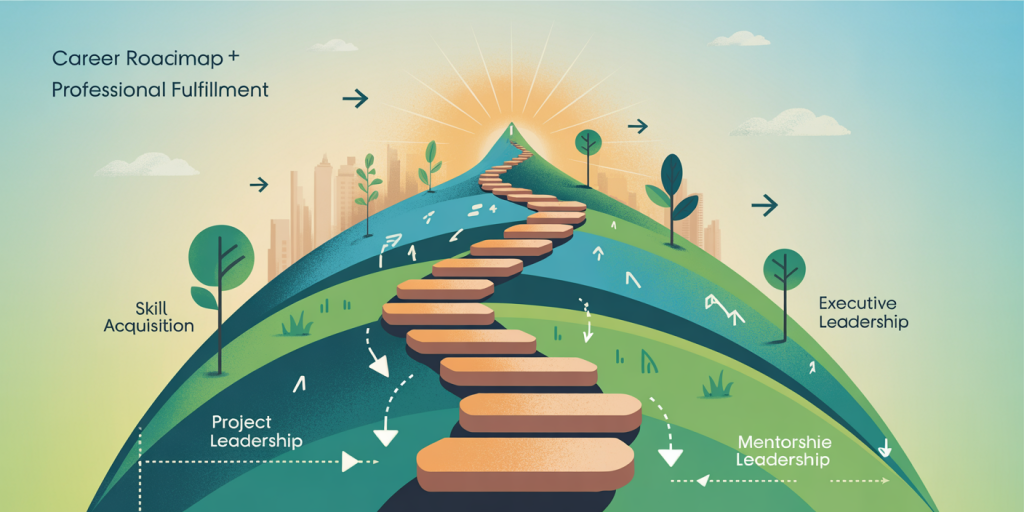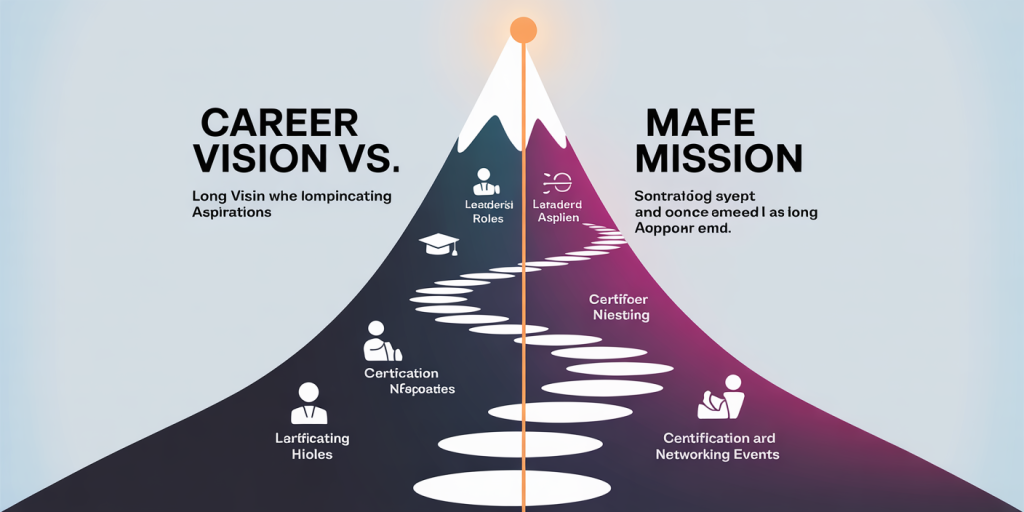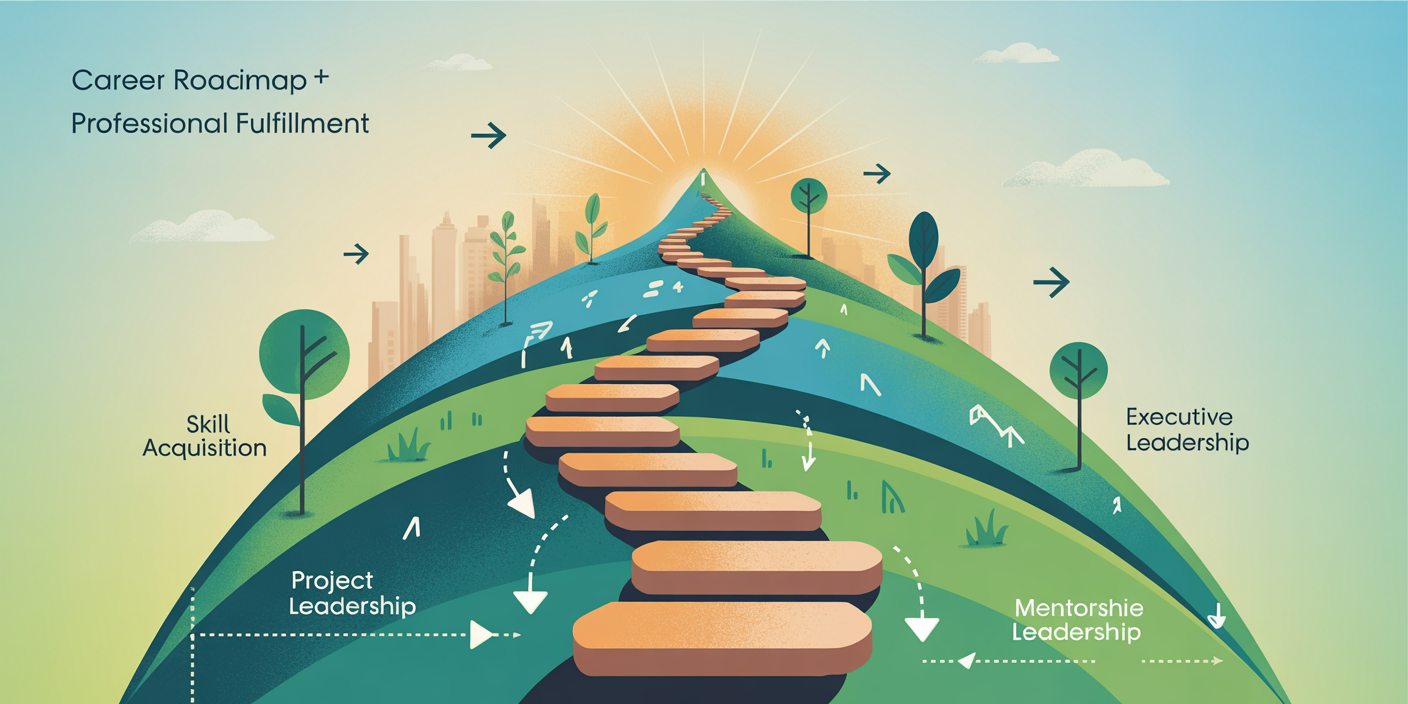In today’s rapidly changing job market, planning a career can feel daunting. According to a recent LinkedIn survey, 70% of professionals express uncertainty about their long-term career paths. The pressure to make the right decisions early on, combined with evolving industry demands, can lead to analysis paralysis or burnout. However, a well-structured career roadmap can provide clarity and direction. The key is to design this plan without becoming overwhelmed by the myriad options and information available.

Developing a career roadmap is not just for fresh graduates or job seekers; it is a continuous process for anyone aiming to grow professionally. This article breaks down the methodology of creating a career roadmap into manageable steps, enriched with real-life examples, comparative insights, and actionable tactics. By applying these, readers can confidently take charge of their career development.
Understanding the Purpose of a Career Roadmap
A career roadmap is essentially a personalized strategic plan outlining your professional goals and the steps you need to take to achieve them. Unlike a one-size-fits-all approach, a true roadmap reflects individual ambitions, skills, values, and market realities. It serves as a navigational tool that minimizes the risks of stagnation and indecision.
For example, consider Maria, a marketing specialist from Austin, Texas. She felt stuck after five years in the same role and was unsure about changing industries or seeking promotions. By creating a career roadmap, Maria identified transferable skills she could leverage in digital analytics—a growing field with promising salary potential. She set small milestones, such as completing an online certification and networking within the analytics community, which helped her transition smoothly without feeling overwhelmed.
Research supports the importance of goal-setting and planning in career success. A 2018 study by the American Psychological Association found that people who set clear, structured goals were 42% more likely to report higher job satisfaction and career progress. Thus, starting with clarity around purpose is crucial before diving into specifics.
Breaking Down Your Goals: Vision vs. Mission
Before plotting the trajectory, it’s vital to differentiate between your career vision and mission. The vision is your long-term aspiration — the “where” you want to be, while the mission is the “how” you intend to get there. Understanding each helps to simplify the roadmap creation.
Take James, an IT professional aiming to become a Chief Technology Officer (CTO) by age 40. His vision is to hold a leadership position in technology innovation. His mission includes acquiring leadership experience, gaining certifications in cloud computing, and building a professional network with industry experts. Breaking down this ambitious vision into actionable missions makes the path clearer and less intimidating.

Using this framework, align your roadmap in two tiers:
| Aspect | Description | Example |
|---|---|---|
| Vision | Your ultimate career aspiration | Becoming a CTO, Entrepreneur, or Expert Advisor |
| Mission | Short-medium term objectives and methods | Earning certifications, leadership roles, networking |
This distinction reduces overwhelm by compartmentalizing big-picture dreams into achievable tasks that can be monitored and adjusted over time.
Implementing SMART Goals to Track Progress
One cause of feeling overwhelmed during career planning is vague goal-setting. Ambiguous aims like “I want to get promoted” don’t provide a clear route forward. Applying the SMART criteria — Specific, Measurable, Achievable, Relevant, Time-bound — transforms nebulous goals into concrete milestones.
For instance, Sarah, a junior graphic designer, wants to become a senior designer. Instead of a simple wish, she defines her SMART goal: “Complete an advanced course in UX design by December 2024, update portfolio with 3 case studies by March 2025, and apply for senior positions by June 2025.” This specificity keeps her focused and motivated.
Below is a comparative table to illustrate generic versus SMART goals:
| Goal Type | Description | Example |
|---|---|---|
| Generic Goal | “Advance in my career” | “Advance in my career” |
| SMART Goal | Specific, measurable, and time-bound objectives | “Complete 2 project management certifications by August 2024 and apply for team lead roles by December” |
Using SMART goals helps maintain momentum and reduces the anxiety of uncertainty by clearly indicating what success looks like and by when it should be achieved.
Utilizing Professional Tools and Resources Strategically
In the digital age, professionals have access to plenty of career development tools such as online courses, networking platforms, and self-assessment tests. However, excessive options can contribute to decision fatigue. To prevent this, it’s crucial to select tools aligned with your specific roadmap needs rather than trying to use everything at once.

John, a mid-level software engineer, felt overwhelmed by thousands of courses on platforms like Coursera and Udemy. He narrowed his focus to learning Python for data science, based on job market demand in his city. He leveraged LinkedIn Learning and Kaggle challenges, completing one course per month, which directly improved his candidacy for a data scientist role he aimed for.
To help, here’s a focused comparison of popular professional development tools:
| Tool Type | Description | Best Suited For | Example Platforms |
|---|---|---|---|
| Online Courses | Skill-building through structured content | Skill upgrade in tech, business, design | Coursera, Udemy, LinkedIn Learning |
| Networking Platforms | Building professional contacts and mentorship opportunities | Job seekers, career changers | LinkedIn, Meetup, Shapr |
| Self-Assessment Tests | Identifying strengths, weaknesses, and interests | Early-career individuals or those resetting goals | Myers-Briggs, CliftonStrengths, StrengthsFinder |
Being deliberate about which tools to incorporate keeps the career roadmap manageable and adaptive, avoiding overload.
Leveraging Mentorship and Networking for Real-World Insight
Creating a career roadmap in isolation can be challenging if you lack real-world perspectives. Mentors and networking contacts provide invaluable guidance, feedback, and encouragement that demystify career trajectories. Moreover, they can help avoid common pitfalls by sharing their experiences.
Consider Leah, a communications manager who wanted to pivot into corporate social responsibility (CSR). She connected with three mentors working in CSR through a professional association. Their advice on certifications, typical career paths, and industry needs helped Leah craft a realistic and actionable plan, boosting her confidence and reducing uncertainty.
Recent data indicates 85% of jobs are filled through networking (LinkedIn, 2023), emphasizing the importance of building relationships aligned with your roadmap. Engaging mentors can also help you hold yourself accountable and provide moral support during challenges.
Networking and mentorship should be integrated into your roadmap with defined interactions, for example: Attend at least two industry events per quarter. Schedule quarterly check-ins with a mentor. Join an online professional group relevant to your field.
These specific commitments help keep social support structures intact without overwhelming your schedule.
Future Perspectives: Adapting Your Career Roadmap to Evolving Trends
The workplace is continuously evolving due to technological advancements, globalization, and shifting economic conditions. Your career roadmap should not be viewed as a rigid blueprint but as a dynamic guide adaptable to change.
For example, with automation predicted to replace or radically change 39% of U.S. jobs by 2030 (Brookings Institute, 2020), professionals must build resilience and versatility into their plans. This might involve developing soft skills like emotional intelligence, mastering emerging technologies, or exploring interdisciplinary roles.
Successful professionals like Elon Musk or Satya Nadella illustrate how adapting career goals in response to new opportunities created long-lasting impact. Regularly revisiting and revising your roadmap—say every 6 to 12 months—ensures relevance and prevents stagnation.
To support adaptability, integrate these strategies: Monitor industry trends via newsletters or reports. Allocate time for continuous learning. Be open to lateral moves or new roles that align with evolving market needs.
By embracing flexibility, your career roadmap remains a source of empowerment rather than stress, continually aligning your aspirations with reality.

Deixe um comentário